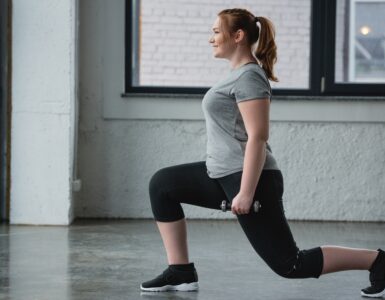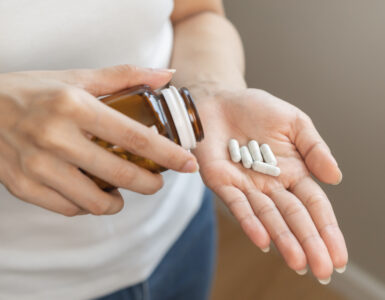Be sure you have a comfortable pillow to rest your head on. With so many choices on the market, you might be stumped about what type will give you the best night’s rest. Family and Consumer Science Educator Teresa Hunsaker has some important “pillow talk” about pillows.
Choosing one can be time-consuming, but if you decide ahead of time whether you need a soft, medium or firm pillow, you’ll quickly eliminate two thirds of the pillows out there. Check out these tips before you buy.
______________________________________________________________________
Tip #1 Determine the Best Size
The size of pillow you pick will depend on the size of your bed and hwo you sleep. For a twin, you’d probably choose a standard pillow. For a queen bed you’d get two queens (although many folks like kings even for their queen size beds), and for a king bed you’d get two king pillows.
Tip #2 Know the Materials – Especially the Fill
After size, the next most important thing to decide is what type of fill you want. Read labels to determine what the inside of the pillow is made of — called the “fill”. Pillow fills can be polyester, foam, goose down or a combination of feathers and down. A foam pillow will feel firm and hold its shape throughout the night, even when you shift on the bed. A down pillow will squish with your head and give it a soft cushion. You can crumple it up for snuggling. Something right in the middle would be a pillow made with polyester filling. And a good quality compromise might be a pillow with a core of foam or feathers, surrounded or wrapped with an outer coat of soft down. Most top quality feather and down pillows are hypo-allergenic and can be used by people with allergies.
Down is usually more expensive. While it is very soft and is easy to shape or mold to your head and body, the offer very little structural support compared to pillows filled with firmer materials. People who suffer from moderate or severe spinal disc degeneration, spinal stenosis, myofascial pain, or trauma often seem to experience a more restful night’s sleep with a firmer pillow. Pillows filled with grain or buckwheat hulls are often effective for people with any of the above-mentioned conditions. Pillows stuffed with buckwheat hulls are gaining in popularity. The hulls are said to provide good neck and back support and are supposed to stay warm in winter and cool in summer.
The white goose and duck down tends to be the most prized as it looks cleaner in the shell. White goose down is perceived to be better than duck down, but in reality it’s the fill power that gives the down its quality features and maeks it a premium item. The quality of the down is also determined by how well the down is processed and cleaned. If not cleaned well, the weight of the down will have a dirt component in it. Therefore it is very important to deal with reputable stores and suppliers when selling down products. Polyester, which is less expensive, is comfortable too, depending on the quality, but it won’t fluff up the way down does.
Tip #3 Determine the Fullness of the Fill — Density and Firmness
Check the amount of fill in the pillow (how full it is). The fill density determines the firmness of the pillow. The more fill, the firmer the pillow. Select a soft pillow if you sleep on your stomach or frequently move around. This will prevent you from straining your neck. Buy a medium pillow for good support if you sleep on your back. Try a firm pillow for maximum support if you sleep on your side. Most quality pillows give information about the best use for the type of pillow you’re considering. Try out several types for greatest comfort. Regardless of the firmness, be prepared to renovate the feather or down fill every 10-12 years or so. Foam and other synthetic fibers disintegrate or break down, so need to be replaced more frequently than down — every 4-6 year. For younger children, they should have a fairly flat pillow as their necks are not large neough for the higher lofting pillows and will put their spine out of its natural position. One last note: You do not have to buy the same pillow for each person sleeping in the bed, but choose the pillow that is right for each person.
Tip #4 Consisder Special Features
Choose a cover fabric that’s soft and breathable for the cover or exterior of the pillow. The cover on a foam pillow is not as important. But for a feather or down pillow be sure that the ticking or cover is tightly woven cotton so that the feathers don’t leak out. Buy a pillow cover for every pillow you own. This will keep the ticking clean and protect the pillow cover. Make sure the pillow’s seams are tightly sewn to prevent fill leakage. Look for labels that say “hypo-allergenic” if you have allergies to certain types of pillow fill. Most manufacturers make “allergy-free” pillows now. Purchase a pillow cover with a zipper if you suffer from allelrgies. it goes under your pillowcase and helps protect you from dust mites.
Tip #5 Set Your Budget
Like everything, you cna pay a lot or a little for a bed pillow. And you usually get what you pay (or don’t pay) for. A cheap foam pillow might cost as little as $5 but a top quality down or feather pillow can be over $100, depending on the size. If you have a limited budget, select one or two good quality pillows to actually sleep on and use an inexpensive one for leaning up against for reading or for decoration with a sham on your bed. Pillow costs vary by manufacturer but are generally detemrined by the type of fill, the thread count of the cover ( a 310 thread count is the most expensive), and the quality of the stitching.
Use of a variety of pillows for both comfort and support can make a big difference in alleaviating or avoiding back pain or neck pain and getting a good night’s sleep. For people with spinal disorders, the right type of support can be especially important in helping the spine rest comfortably. Replace your pillow if it’s lumpy, flat, or stained or has a bad ordor. It’s important to clean a pillow regularly. The pillow should come with care instructions. Some feather and down pillows can be washing in a home washer. Others recommend dry cleaning. Save the cleaning instructions in your linen closet and follow them for longest life.
For more information, call the USU Extension/Weber County office at extension.usu.edu/weber or call (801) 399-8200.















Add comment